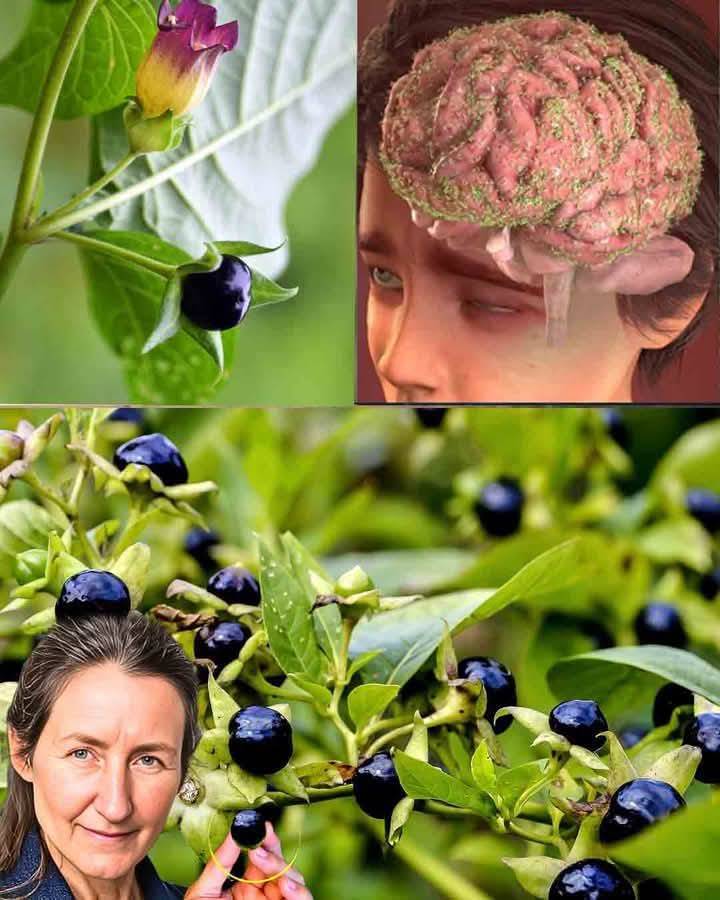ADVERTISEMENT
### **Why Poison Hemlock Grows Everywhere**
Despite its reputation as a deadly plant, poison hemlock continues to thrive in both rural and urban environments. Its ability to grow in a variety of conditions and its tendency to spread rapidly makes it a formidable presence in many parts of the world.
**1. Adaptability to Different Environments:**
Poison hemlock is highly adaptable and can grow in a range of soil types, from moist, well-drained areas to more alkaline soils. Its ability to thrive in disturbed soils—such as roadsides, fields, and abandoned lots—means it is often one of the first plants to take root in these environments, crowding out other plants that may not be as resilient.
**2. High Seed Production:**
Poison hemlock produces large quantities of seeds each year, contributing to its ability to spread quickly and cover vast areas. Each flower cluster can yield hundreds or even thousands of seeds, which are easily dispersed by wind, water, or animals. This prolific seed production ensures that poison hemlock can easily establish itself in new areas, including areas where people or livestock may accidentally encounter it.
**3. Minimal Care Requirements:**
Unlike many cultivated plants, poison hemlock requires very little maintenance. Once it takes root, it can grow without significant intervention, making it an ideal candidate for areas that are prone to neglect or lack of regular maintenance. This contributes to its widespread presence in suburban and rural areas, particularly in places like roadways, parks, and undeveloped lands.
—
### **The Risks to Livestock and Wildlife**
Poison hemlock doesn’t just pose a danger to humans; it can also be harmful to livestock and wildlife. Grazing animals such as cows, horses, and goats may mistakenly consume parts of the plant while foraging, leading to poisoning. Ingestion of even a small amount of poison hemlock can lead to severe symptoms and death in animals, making it a significant concern for farmers and ranchers.
Interestingly, many animals are instinctively cautious around toxic plants like poison hemlock, but young animals or animals with little experience foraging may still ingest it. For wildlife, including deer, rabbits, and other small mammals, poison hemlock can have the same deadly consequences, threatening biodiversity in the wild.
—
### **How to Safely Identify Poison Hemlock**
It is essential to be able to correctly identify poison hemlock, particularly if you live in an area where it is common. Here are some key identifying features:
– **Height:** Poison hemlock grows tall, typically between 6 to 10 feet (1.8 to 3 meters) in height.
– **Stems:** The stems are hollow and smooth, with purple or reddish-purple spots or streaks.
– **Leaves:** The leaves are finely divided, resembling those of parsley or fennel. They have a strong, unpleasant odor when crushed.
– **Flowers:** Poison hemlock produces clusters of small white flowers, similar to those of other plants in the carrot family, such as Queen Anne’s lace.
– **Roots:** The plant has a thick, tuberous root system that is also toxic. It can be a challenge to identify the root without pulling up the plant, but it is always wise to avoid handling or disturbing the plant.
—
### **What To Do If You Encounter Poison Hemlock**
If you come across poison hemlock in your garden or while out hiking, it’s important to take care to avoid touching or consuming any part of the plant. Here’s what you can do:
– **Do not ingest any part of the plant:** Even small amounts of poison hemlock can be lethal. Avoid touching it, and keep it away from children and pets.
– **Wear gloves if handling:** If you must remove poison hemlock from your property, wear gloves and long sleeves to avoid direct contact with the plant.
– **Dispose of the plant safely:** After removing the plant, dispose of it in a way that ensures it cannot be ingested by animals or humans. Do not compost it or leave it lying around.
—
### **Conclusion: The Secret of Poison Hemlock**
Poison hemlock serves as a stark reminder of the dangers that can lurk in the natural world. Although it grows everywhere, blending seamlessly with the surrounding vegetation, it hides a dark secret: a potent neurotoxin capable of causing death if consumed.
It is essential to understand the characteristics of this dangerous plant, so we can avoid its toxic effects and protect ourselves, our families, and our animals. By learning to recognize poison hemlock and exercising caution, we can safely coexist with nature and appreciate the beauty of the plants around us without falling victim to their hidden dangers.
As with all plants, respect and knowledge are key to coexisting with the world around us. The secret of poison hemlock is a stark reminder that even the most beautiful plants can have dark, deadly sides, and we must always approach nature with care, caution, and respect.
